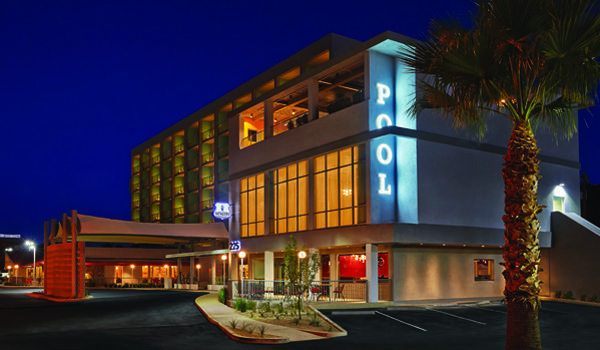Arizona may be pushing its weight around as a tech hub, but the state is also seeing its hospitality sector bounce back with a force that is causing waves of property exchanges, renovations and re-branding efforts to many hotels and resorts.
Most recently, the Ritz-Carlton on 24th Street and Camelback Road in uptown Phoenix did not have its contract renewed and will be re-branded by Destination Hotels as part of the Autograph Collection, an independent boutique-style hotel. Tempe has also seen re-branding of a former Howard Johnson into the quirky Graduate Tempe near Arizona State University by AJ Capital Partners and the old Hayden Flour Mill in downtown Tempe has expectations to be the digs for another boutique hotel.
“In Arizona, it seemed we had the double whammy of economic downturn and immigration legislation that had a negative impact on travelers, especially business travelers,” says HSL Properties Executive Vice President Omar Mireles, who purchased Hilton’s El Conquistador resort in Tucson last January. “As that has faded, that has made sellers more willing to sell.”
Phoenix hotel occupancy rose nearly 5 percent in the first four months of 2015, bumping it to No. 3 in the top 25 markets. It helps that coastal towns of San Francisco, Los Angeles, Boston and Atlanta are seeing dramatic rises in pricing, which is bringing business inland, says CBRE Hotels First Vice President Jerry Hawkins.

“Phoenix is in great demand for hotel purchases right now,” he says, adding that the city can expect some industry-wide changes to affect a sector that’s going through a complicated metamorphosis.
The way typical branded hotels run is as such: A franchisee buys a building, hires a management company to handle day-to-day operations and then contracts out with one of the big “flags,” such as Starwood Hotels & Resorts (The W, The Westin, Sheraton, Aloft, among others). Every seven years or so, brands provide franchisees with a property improvement plan — or a PIP — and a check that can be cashed as a loan from a bank.
“Being able to borrow from the bank for a PIP is less existent,” says Caliber Companies CEO Chris Loeffler. “The brands stopped forcing owners to do renovations in 2005, knowing what the future would look like.”
Because of this, it could be nearly 17 years since some hotels have been renovated with a PIP. Renovation requests were down due to brands not wanting to lose their agreements.

“Now that we’re through the recession, the brands are more willing to force an owner to comply with the property’s current brand,” he says.
This is leading to more hotels exchanging hands. Owners may not be able to keep up with aggressive branding pushes for a variety of reasons, including an owner being unable to borrow the necessary amount for renovations. A hotel renovation can cost nearly as much as a property.
“(Consistent brands) are becoming somewhat obsolete,” he says. “Brands, even if they can upgrade, are forcing (older hotels) out of their systems and will not renew the brand.”
Behold the boutique hotel.
“Boutique hotels weren’t doing well (at the height of consistent hotel branding),” says Kimbra Cole, CBRE Hotels. “Now, Hiltons are bringing them into the system. If you go into an Autograph Collection hotel in Dallas, it won’t look anything like the one in Phoenix. They focus on what’s local.”
Brands that don’t meet the standard and are phased out will be converted into less expensive hotels. Overall, this has the potential to push values down in the sectors, says Hawkins. There is a good chance that the already inexpensive hotels will be re-purposed for independent or assisted living, he adds.




